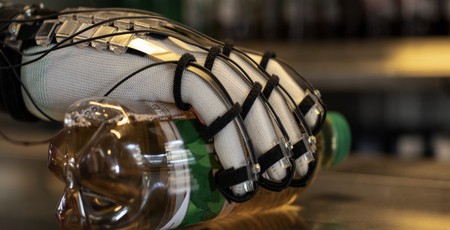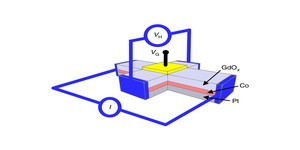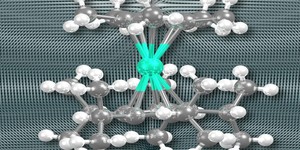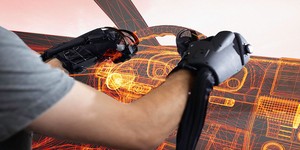Researchers demo lightweight, low-power haptic VR gloves
October 16, 2018 | 10:36
Companies: #epfl #eth-zurich

Researchers at the École polytechnique fédérale de Lausanne (EPFL) and Eidgenössische Technische Hochschule Zürich (ETH Zürich) have announced the development of a prototype haptic glove for virtual and augmented reality systems which, they claim, is the lightest design yet: DextrES.
The current boom in virtual and augmented reality comes with one major drawback: Regardless of how realistic the visuals become, there's a big difference between actually holding an item and holding its virtual equivalent - and that difference can spell disaster for those looking to use VR and AR for training purposes. There are a range of approaches for solving this issue, including finger-tracking cameras and grip-sensing controllers, while others are developing glove-like peripherals which offer haptic feedback - the ability, in a crude form at least, to 'feel' the virtual objects.
It's this latter category in which EPFL and ETH Zürich researchers claim to have made a breakthrough: The DextrES glove system, which provides haptic feedback at very low power and with a hardware weight of just eight grams per finger. 'We wanted to develop a lightweight device that - unlike existing virtual-reality gloves - doesn't require a bulky exoskeleton, pumps or very thick cables,' explains EPFL's Soft Transducers Laboratory (LMTS) head Herbert Shea of the project - and unlike its industrial-focused rivals, DextrES has the gaming market firmly in mind. 'Gamers are currently the biggest market, but there are many other potential applications - especially in healthcare, such as for training surgeons. The technology could also be applied in augmented reality,' Shea explains.
The glove system runs on a 200V power system drawing milliwatts of power, the researchers claim, and while the current system uses a small power cable it is also capable of running from a compact battery. The glove hardware itself is just two millimetres thick, and is constructed from nylon with elastic-metal strips running over the fingers. As a virtual object is touched, a controller system introduces a voltage differential between the strips causing them to stick through electrostatic attraction and block the movement of the fingers - providing a holding force, the prototype gloves have shown, of up to 40 Newtons per finger.
The team has indicated that it is looking to scale the device up with a view to applying the same technique to other parts of the body - settle down at the back, there - to, potentially, provide full haptic feedback in a lightweight suit. A timescale for this development, and for a commercial launch of the glove variant, has not been provided.

MSI MPG Velox 100R Chassis Review
October 14 2021 | 15:04








Want to comment? Please log in.